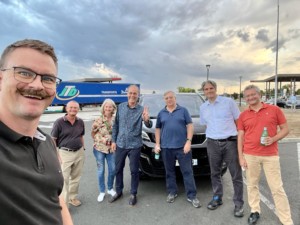
In 2019 I organized an Industry 4.0 tour through southern Germany for a few friends. We called this the “Van of Nerds,” and you can read all about it in a series of blog posts starting here. The participants liked the van trip so much that we wanted to repeat this experience… and then came COVID. We held two online Van of Nerds mini-conferences (organized by our Nerd Torbjörn Netland), and finally, on September 5–9, 2022, we were able to take another real-world tour with our van of nerds, this time in France. The tour was organized thanks to nerds Franck Vermet and Michel Baudin.
The Nerds
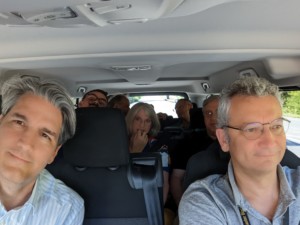
The group consisted of seven people from all over the world coming together for one week of studying Industry 4.0 in France and having fun. If you work in lean, you surely will recognize some of these names. The group also included multiple recipients of Shingo Awards. We are (in alphabetical order):
- Michel Baudin (Lean Expert and Consultant; USA)
- Prof. Dr. Peter Hines (Director, Enterprise Excellence Network; Wales)
- Prof. Torbjörn Netland (Production Professor at ETH Zürich; Switzerland)
- Prof. Dr. Ralph Richter (Retired Plant Manager of Bosch, Production Researcher; Germany)
- Cécile Roche (Director for Industrial Performance, Thales group, but soon an independent consultant, France)
- Prof. Christoph Roser (Lean Professor, Author of this blog; Germany)
- Franck Vermet (Production Systems Mentor, France)
The Locations
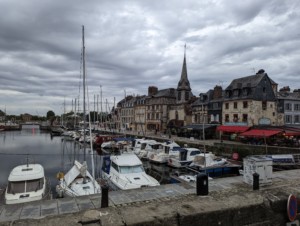
We visited quite a few locations, many of them in Paris, but some all over France, as shown on the map below, including a lot of aerospace companies. Of course, we also had plenty of time for fun stuff and lengthy discussions in the van. I will write briefly about all locations in this Van of Nerds series (not necessarily in sequence), but a few locations revealed interesting things that justify a larger article. These will follow later. Many thanks to all hosts for letting us see their locations!
- Campus Fab, Bondoufle: An innovative demonstration lab with lots of fancy technology to showcase industry 4.0.
- Centre innovation Évry, University of Évry Val d’Essonne/Université Paris-Saclay, Evry: A full assembly line for scooters for students, researchers, and companies to experiment with industry 4.0 on an assembly line.
- SNCF Warehouse / Repair, Saint Dizier: Maintenance for the French railway SNCF, with lots of good kaizen activity.
- LISI aerospace, Saint Ouen l’Aumone: Making high-quality screws for aerospace, and a forerunner on Industry 4.0. I was especially excited that they used CONWIP.
- Safran Innovation Aerogarage, Saclay: Research and Innovation Center of the world’s second-largest aircraft equipment manufacturer.
- Renault, Douai: A plant of the maker of famous French cars, including body welding, painting, and assembly.
- Safran Nacelles, Le Havre: Maker of engine nacelles (Structure that cover the engine, attached to the aircraft).
- SLB (formerly Schlumberger), Clamart: Maker of sensors for mining and drilling, where the sensor is down a mineshaft five kilometers below ground.
- JPB, Montereau: Highly innovative maker of self-locking screws and other parts for aircraft; excellent use of industry 4.0.
- Thales, Elancourt: Maker of military sensors, from small night vision goggles to large aircraft sensor pods.
- AFI KLM E&M, Orly: Maintenance facility for aircraft engines at Orly airport.
Safran Innovation Aerogarage
 The Safran Innovation Aerogarage in Paris Saclay is an innovation center of Safran, the world’s second-largest aircraft equipment manufacturer. It doesn’t do manufacturing, but it does do research. It also provides a safe haven for startups. This is actually the workplace of fellow nerd Franck Vermet. We visited the 3D printing lab and tried out 3D glasses set up for training of employees. I did like that they used the approach of Training Within Industry (TWI) for their training. I am a big fan of TWI. The program is old but still very valid, and it was refreshing to see TWI updates with modern technologies.
The Safran Innovation Aerogarage in Paris Saclay is an innovation center of Safran, the world’s second-largest aircraft equipment manufacturer. It doesn’t do manufacturing, but it does do research. It also provides a safe haven for startups. This is actually the workplace of fellow nerd Franck Vermet. We visited the 3D printing lab and tried out 3D glasses set up for training of employees. I did like that they used the approach of Training Within Industry (TWI) for their training. I am a big fan of TWI. The program is old but still very valid, and it was refreshing to see TWI updates with modern technologies.
AFI KLM E&M
AFI KLM E&M is a major player in aircraft maintenance, with repair facilities all over the world. We visited the repair and maintenance facility at Orly airport. Taking apart an engine and putting it back together is a major effort, and around 6000 parts for one engine have to be disassembled and reassembled again. There are usually six to seven levels of disassembly (i.e., from the engine to a sub-component, a sub-sub component, and so on) until you end up with a single screw or turbine blade to be inspected and cleaned. The example for components are the fan blades, the LPC modules, the fan frames, the fan case, the core engine, the high-pressure turbine (HPT), the low-pressure turbine (LPT), and the fan shaft.
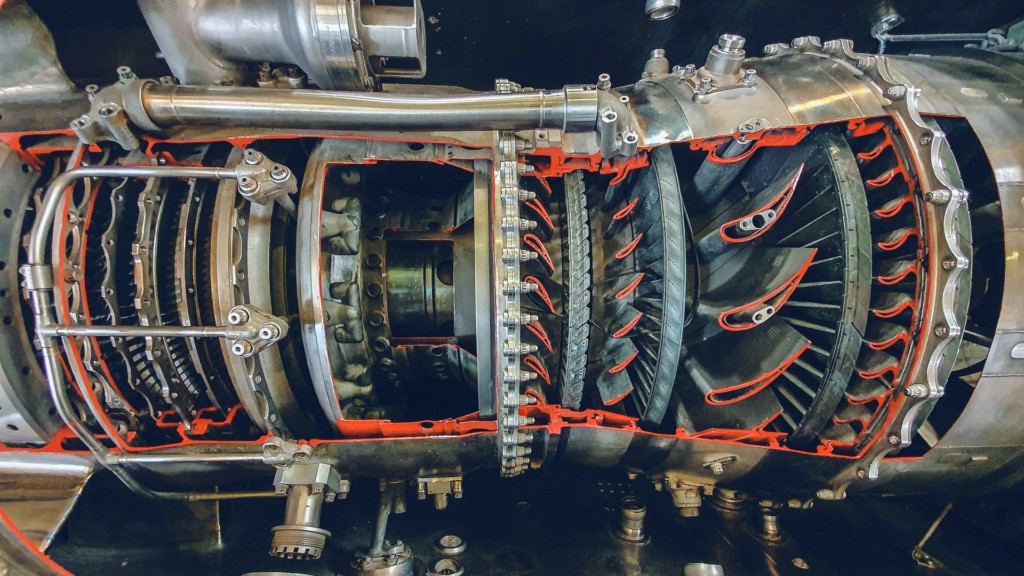
There are different types of engines and different types of inspection levels, and it is a make (or service)-to-order approach. This makes planning a bit difficult, and during our visit there were still the COVID aftereffects on the airline industry, and the facility was running at half capacity. I have actually been in quite a few aircraft maintenance facilities from different service providers in Haneda (Tokyo), Frankfurt, Zürich, and now Orly (Paris), and it is always a bit chaotic.
They mark all parts with a tag including the serial number of the engine and the reference number of the next higher assembly (i.e., which component the part goes in). Most parts also had a RFID tag with the same information. Only, if there was a box or container with multiple parts for the same engine component, only one part had the RFID chip. There were dozens of customized containers and transports, from boxes with slots for the turbine blades to rolling shelves, rolling drawers, and rolling carts with hangers. For the inspection of larger parts they had some ergonomic aids. For instance, the turbine unit was put upright either in a hole with a lift or in a hole around a large platform that can be raised. This allows the ergonomic inspection of the blades.
The location actually will have a major reorganization coming up, and much of the shop floor will look quite different in the near future. This is of course a great opportunity to improve operations.
In my next post I will look at some more locations, and even have some posts that go into much more detail on some of the most juicy bits of what we saw and learned. Now, go out, keep on reading, and organize your industry!
PS: Fellow Nerd Michel Baudin (and Cécile Roche) has also written about the trip. Here are his blog posts, check ’em out for a different view of the same tour 🙂

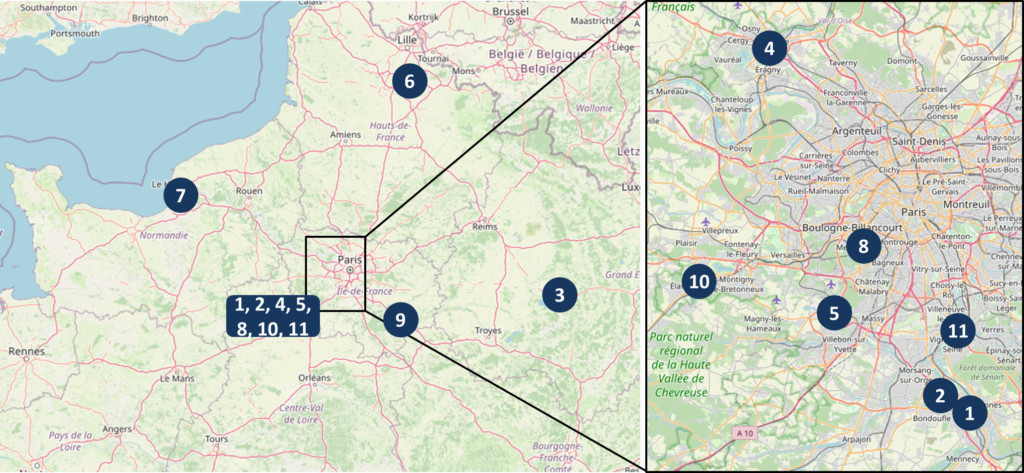
Hi Chris,
Amazing to see your enthusiasm and energy levels to not only organoise such interesting and informative tours but also share your observations for so many of us to learn and benefit from.
Regards,
B. Jayaraman
Hi Jay, good to hear from you. The credit this time goes to Franck Vermet and Michel Baudin for organizing the tour 🙂